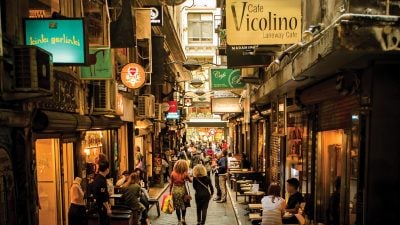Home / Africa & Middle East / Exploring the Cities of Tomorr…
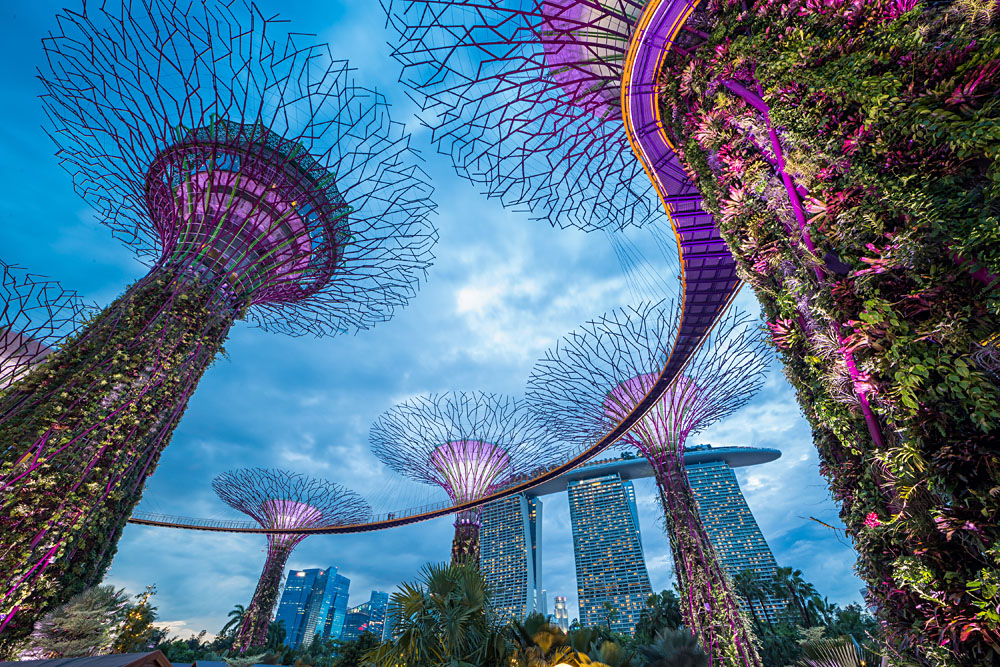
Exploring the Cities of Tomorrow: The World’s Coolest Modern Cities
Increasingly, the gap between the world we live in and the futuristic cities we see in sci-fi movies and TV shows is shrinking. For instance, the original Blade Runner film was set in Los Angeles in 2019, which is a mere two years away. We might not have flying cars like in the film, but robots, artificial organisms, and virtual realities are becoming increasingly common aspects of our modern world. Moreover, that movie’s futuristic vision of Los Angeles looks a lot like Tokyo, Shanghai, or Dubai in 2017. We’re living in a futuristic world, which is great for Globetrotters.
If you’ve ever wanted to explore the futuristic worlds of sci-fi movies and TV shows, you need only get on a plane and head to another part of the planet, where radically-innovating metropolises are adapting to the ever-changing world. Fanciful inventions, innovative designs, and towering cityscapes are no longer the stuff of science fiction; they exist in the real world. There are cities of tomorrow out there ready for you to explore.
Dubai
If there’s one consensus decision for the most futuristic city on the planet, it has to be Dubai. Dubai is home to the tallest building on the planet, the largest mall in the world, an underwater hotel, and island archipelagos shaped like a palm, and a map of the world. It’s a massive city built out of a sleepy desert port. A few decades ago, no one was even aware that Dubai existed, apart from people living in the Emirates. Today, there’s not a person the world over who does not recognize the towering achievements of Dubai.
The fact that Dubai literally sprung from the sands of the desert has allowed city designers a lot of freedom in addressing any design flaws that spring up. For instance, while the highways of Dubai have been famously congested for the past decade, city designers have begun replacing traditional roundabouts with turbine interchanges, which allow people to merge without slowing down or changing lanes. It’s this sort of quick-acting city innovation that makes Dubai such a futuristic cityscape.
Of course, there are also the world-famous landmarks that make the city so exciting. Experience the city’s futuristic highlights by heading to the Burj Khalifa to marvel at the Arabian Gulf from a height of 555 metres. Head to one of the palatial malls to experience the shopping paradise that so many visitors see the city as. While Dubai is undoubtedly a city of tomorrow, it’s also specifically a city of tomorrow meant for the wealthy. This is a city of luxury. For a taste of just how opulent this city gets, head to Ski Dubai to experience alpine skiing on an artificial ski slope. You shouldn’t be able to alpine ski in the middle of a blazing hot desert, and yet, here is Dubai to once again prove that the impossible is possible.
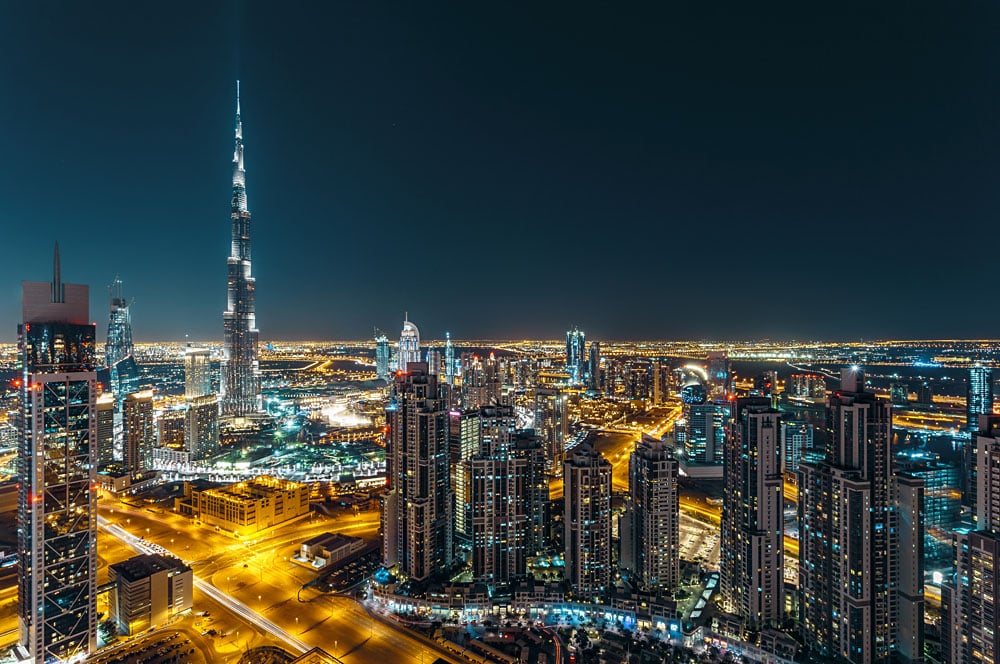
Nairobi
You might have a mental image of Nairobi as a concrete sprawl, and scoff at the idea of it being a city of tomorrow, but innovation is not restricted to the confines of Europe and East Asia. Africa is the fastest-growing continent and cities like Nairobi will lead the way later in the 21st century.
Nairobi’s swirling, busy culture might seem bewildering to a lot of people, but there’s something distinctly modern in how the city’s conflicting natures live side by side here. The city’s dusty streets would make you think this is a backwater capital, but there’s so much of the modern world here thriving alongside tradition. Nairobi is one of Africa’s leaders in the tech industry, which has even landed it the name the “Silicon Savannah” in some quarters. The city is also one of the global leaders in mobile money payments with the omnipresence of M-Pesa. The people of Nairobi have even begun to use technology to mitigate its chaotic traffic system, developing a network map of the matatus (minibuses) that crisscross the city on erratic schedules, and serve as primary transit for a lot of locals.
Nairobi has always had incredible people and an electric food and nightlife scene that’s worth exploring. Its museums and national parks have also long been highlights of a Kenya vacation. But now it’s no longer just a city of tradition and a taste of the past; it’s charging headfirst into the future and innovating rapidly into a city of tomorrow.

Medellin
Once a city known for its crime and connections to Pablo Escobar, Medellin now represents how a city can grow to become a more inclusive, innovative community. It embodies the future’s capacity for growth and reconciliation.
Medellin is a metropolis in Colombia that feels larger than it is, due to its dense cityscape and lively culture. However, although the city is large and full of energy, it still has a lot of poverty. Most of the poor citizens of Medellin live in comunas, which are slums in the outer neighbourhoods and on the hillside. For decades, these comunas have been overrun by criminals and gangsters, making it difficult for people to move around in these communities without fear of violence. To compound the issue, the comunas sprawl across the hillsides, making the streets cramped and the terrain difficult to traverse.
However, recently city developers have installed cable cars and outdoor escalators to ease access to the comunas and allow its residents to simply leave their neighbourhoods without winding through the steep, narrow streets. Inversely, the cable cars and escalators allow other people in the city to enter the comunas and destigmatize the neighbourhoods. New library parks also contribute safe spaces to poorer neighbourhoods, showcasing gorgeous designs while also fundamentally improving the lives of the people who live nearby.
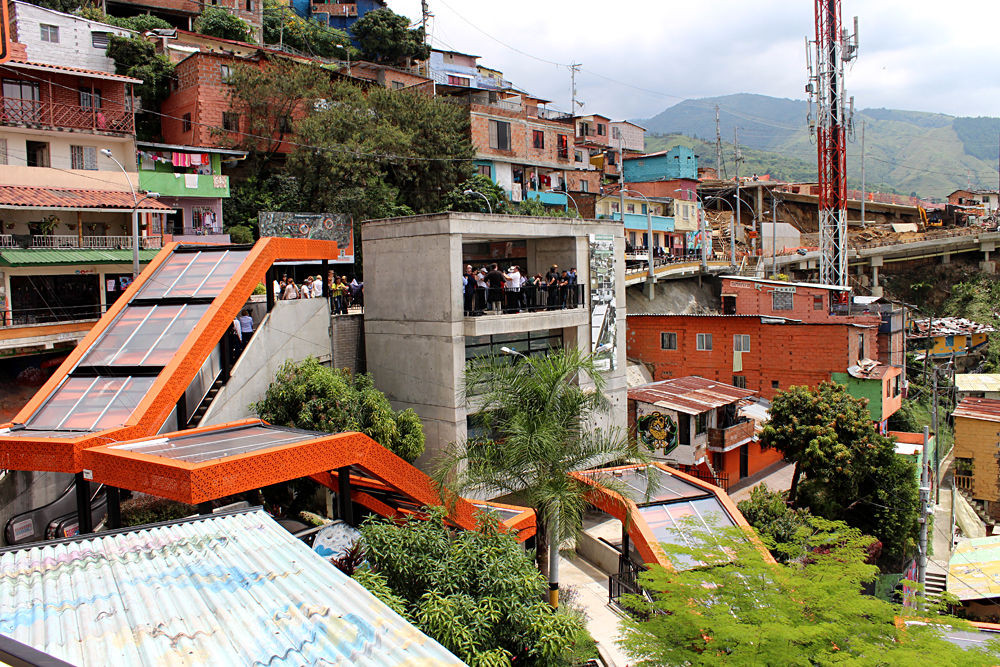
Helsinki
The cities of tomorrow are not built, but designed. They are no longer haphazard urban centres thrown together with no consideration for future infrastructure or aesthetic value. Instead, they’re planned down to the last block. Few cities better encapsulate this focus on design and functionality than Helsinki, the capital of Finland.
Famous the world over for its streamlined city design and easy accessibility, Helsinki has long believed in transparency and the importance of data. This is why it open sources all the data regarding city growth and other important municipal factors, allowing citizens insight into every aspect of its management. The city also boasts some remarkable architecture – Finlandia Hall and the Finnish National Opera House are two particular standouts.
While the city’s focus on design has a large influence on the architecture and infrastructure, it has also seeped into the culture. You need only visit the aptly-titled Design District to see just how design-focused the people of Helsinki are. You can visit the Design Museum, the Museum of Finnish Architecture, and Design Forum Finland to get a glimpse of the designs that’ll define the future, and then stroll the streets of Uudenmaankatu, Fredrikinkatu, and Iso-Roobertinkatu to see the incredible designs people have cooked up in their boutique fashion stores, antique shops, and art galleries.

Tokyo
Of course Tokyo is on this list. This Japanese metropolis embodies so much of what we think of when we think of cities of the future: massive populations, towering skyscrapers, and efficient social planning and public utilities. At nighttime, the city transforms into a wash of neon and reflective glass, looking straight out of a science-fiction film like Blade Runner or Minority Report.
However, beyond simply how it looks, Tokyo is also one of the world’s most futuristic cities for its efficiency. Honed around Japanese notions of order and discipline, the city functions remarkably well despite the possible chaos it could descend into. For instance, walking outside Shinjuku Station at night is a dizzying experience. You’ll see more people than you’re likely to see at any other point in your life, but there’s nothing uncontained or hectic about the crowd. Everyone is heading their own way, calmly moving through the mob. The streets are crowded, to be sure, and a little hard to move against, but there’s no panic or frenzied motion to it at all.
All of Tokyo is like this. The city has seemingly figured out the secret to functioning as a city of tens of millions. Subway cars can be very full, but they depart and arrive on time, and train conductors apologize over the intercom if the train arrives even a few seconds later than scheduled. The world is going to be increasingly crowded in the future. If we’re to enjoy that future, we need to learn from cities like Tokyo and live in harmony.

Seoul
Our visions of the future are intertwined with the Internet. And no city is empowered by the Internet more than Seoul. The South Korean capital is one of the biggest cities in the world and home to the fastest Internet speeds anywhere on the planet. The country made a conscious decision in the late 1990s and early 2000s to focus on Internet infrastructure and radically democratize this utility. Today, those legislations contribute to lightning-fast Internet speeds and universal accessibility across the nation. Even foreigners can take advantage of the country’s Internet infrastructure by accessing one of the 10,000 free WiFi spots in the city of Seoul.
Seoul is a city that never sleeps, which makes sense for a city that’s perpetually plugged-in. People spend their nights here in Internet cafes playing StarCraft and roaming chat apps. The pace of life in Seoul never slows down as the online world knows no day or night. If you want to have the authentic Seoul experience, grab some noodles from a roadside vendor, buy yourself some energy drinks, and head into an Internet café to spend your night playing video games. If you get tired, you can even rent out one of the private gaming rooms as a place to rest your head for a few hours; it means sleeping on a chair, but it works in a pinch.
Seoul fits the image of a city of tomorrow with its massive skyscrapers, neon lights, and overwhelming population. But its futuristic aspects don’t stop with its looks. It’s a city that lives and breathes the life of computer screens and darkened rooms, where even in our most private moments we’re all intimately connected.
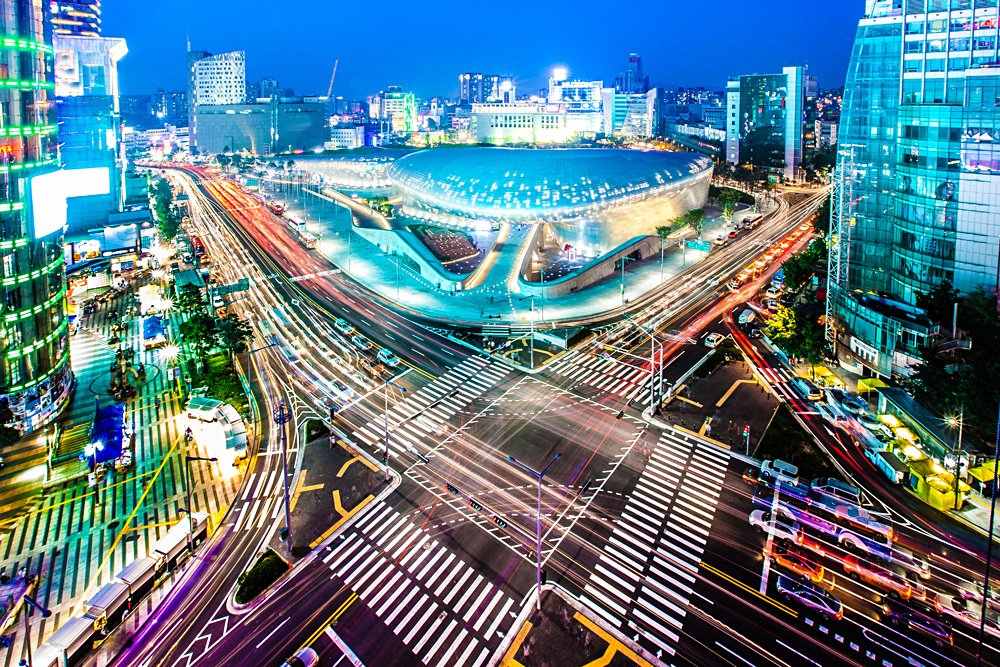
Singapore
Singapore is one of the cleanest cities on the planet. This is largely due to arguably-draconian public cleanliness laws and city initiatives that ban things like chewing gum and litter, and harshly punish anyone who breaks the law. But the city’s civic-mindedness and green initiatives are clearly effective and should be studied by other cities wanting to create a cleaner and greener tomorrow.
Singapore is distinctly cosmopolitan, ethnically-diverse, and eco-friendly. It’s also one of the happiest cities in the world. People are committed to the public good and display a high level of personal and public satisfaction with the city. If we’re to judge a city by the contentedness of its citizens, Singapore has to rate highly among the world’s cities.
It’s also innovative in its infrastructure. Public transit is accessible, cheap, and covers most of the city. Designers work to reduce carbon emissions by producing green skyscrapers that have roof gardens and vegetation growing along their walls that convert carbon dioxide into oxygen. And the city is actively working to reduce landfills and lower traffic congestion, which is not only environmentally sound, but improves the comfort and beauty of the city. If you want to experience a city that has civic life at the forefront of its concerns, head to Singapore.

Bangalore
San Francisco might be home to Silicon Valley and the new lynchpin of the American economy, but Bangalore (or Bengaluru) in India is giving it a run for its money when it comes to technological innovation and startup capital. Like Dubai, Bangalore was off the map a generation ago. Today, it’s one of the fastest growing cities in the world and the Asian mecca for tech culture.
During the tech boom in personal computing and internet technology, Bangalore became the Indian base for software development and fast-consumer goods. It attracted huge amounts of investment and tech entrepreneurs wanting to lead the move into the digital world. Today, Bangalore is one of the most progressive cities in the country and one that continues to grow and innovate. So much of India is steeped in history and tradition; Bangalore exists almost entirely for the world of tomorrow.
There are no world landmarks within its limits, but you’ll find a comfortable climate and an exceptional dining and shopping scene if you visit. It’s an appealing place to see, as it buzzes with the promise of future growth and the possibility of new innovations just around the corner.
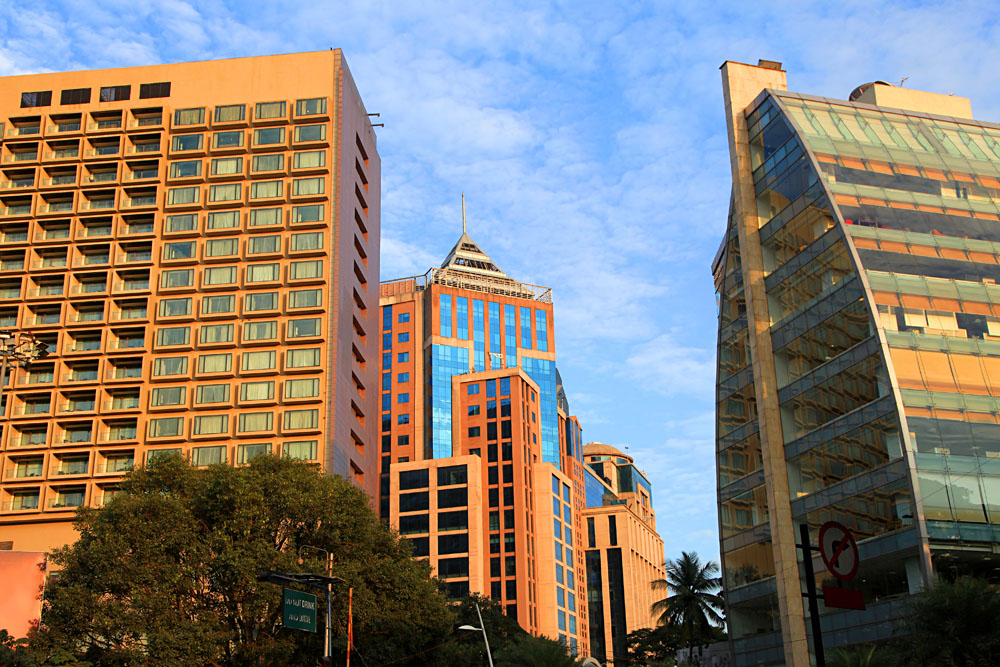
The world is changing must faster than anyone could have predicted. Cities are rapidly growing, and new countries are moving to the forefront of technological and municipal innovation. You don’t have to wait for tomorrow to experience the future. You need only head to one of these modern cities to see it first hand.
Get more travel inspiration by email.
Subscribe
0 Comments

Get the latest travel trends & hear about the best deals on vacations around the world.
If you’re a Globetrotter, these are the newsletters for you!
